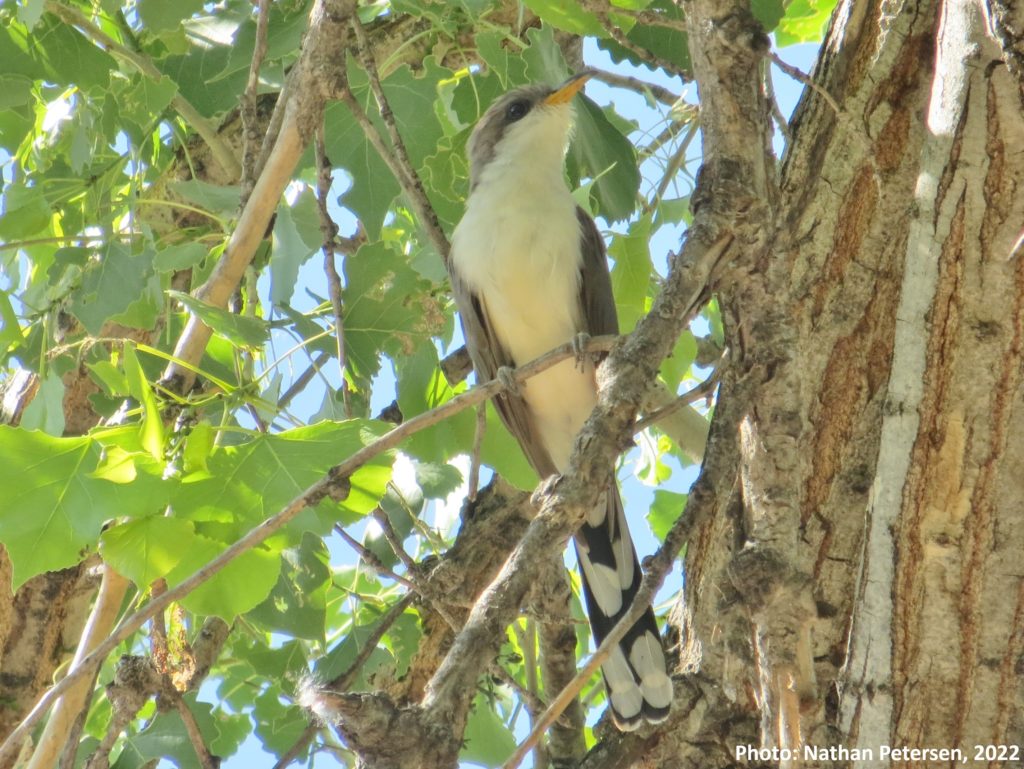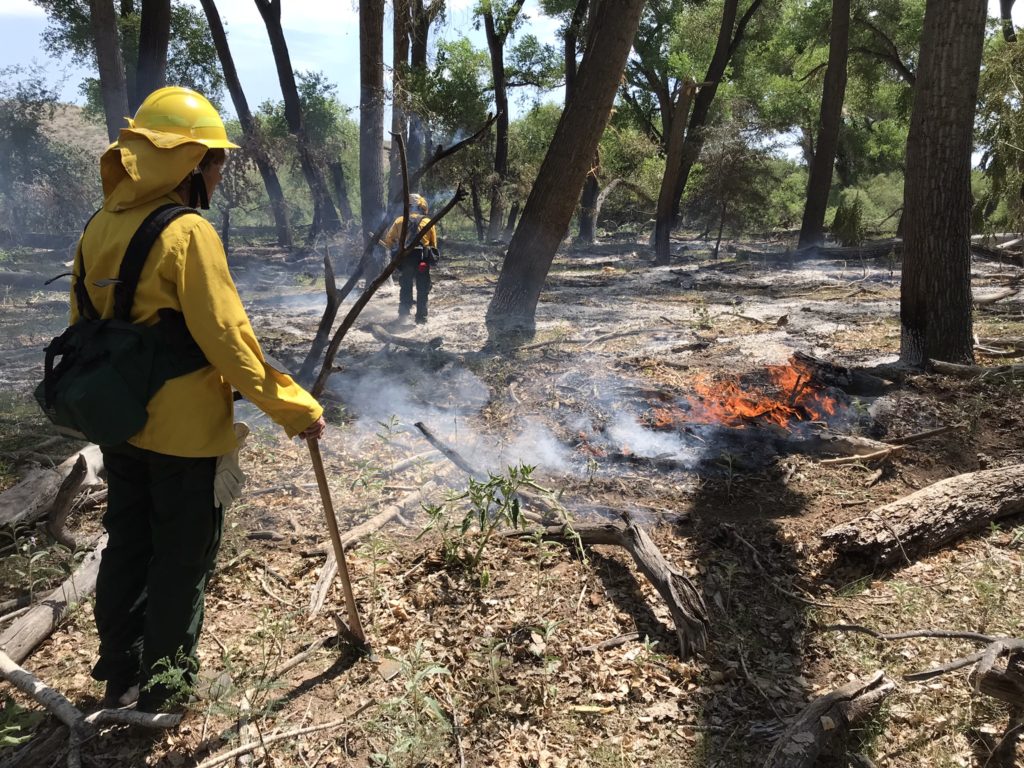New Mexico Game and Fish Wildlife magazine
NMDGF #SaveOurSpecies, Wildlife & Habitat Conservation
Erin Duvuvuei has managed a lot during her conservation career. She’s our non-game avian biologist who recently participated in a comprehensive survey of yellow-billed cuckoos in 11 western states. Erin’s encounter during a recent survey allowed her to experience the threats that can be faced by this bird firsthand.
The yellow-billed cuckoo (Coccyzus americanus) is a member of the cuckoo family (Cuculidae). It’s native to wide swaths of the Americas running from southern Canada to the Caribbean. Sometimes it even migrates as far south as northern Argentina.
The “western” yellow-billed cuckoo is federally threatened across its range. Habitat loss—including riparian destruction and invasion of non-native trees in our riparian area—is one of the major threats to the cuckoo’s existence in the West. Because of these losses, the US Fish and Wildlife Service identified only 500,000 acres of critical habitat across the West available to this population segment.
Recently, we worked with ten western states to complete yellow-billed cuckoo range surveys across this critical habitat. Through these surveys, we’re developing a species distribution model for conservation and recovery efforts for the cuckoo.
Erin joined forces with our Bird Program Manager Mason Cline and the Southern Sierra Research Station to complete our regional surveys. She surveyed riparian areas stretching from the Gila River to the Rio Grande.
One afternoon, Erin was immersed in a beautiful riparian area outside Silver City, her eyes and ears attempting to make out the slinking figure or distinct “cuckoo” call of a distant bird. Suddenly she noticed something out of place. Her nose picked up the pungent smell of smoke from nearby—smoke from a bosque fire.
Erin crossed the stream and spotted the remnants of the fire. She left the area to find cell reception and report the fire. She soon crossed paths with the Tyrone Volunteer Fire Department who were already en route to the fire. They were joined by the United States Forest Service and New Mexico State Forestry Division. The crews struggled in the July heat, intensified by the fire. Eventually they drowned the fire and extinguished the remaining hot spots. The next morning, they determined the cause of the fire: a lightning bolt. Erin had been unable to finish surveying the area because of the fire. The incident reminded her of the perils that could have impacted nesting cuckoos, or even their chicks, if the fire had grown to catastrophic levels.
Fire has its benefits in many of New Mexico’s ecosystems. However, most of our riparian areas have become overgrown with thick tangles of fire-prone, non-native trees like saltcedar and Russian olive. These invasive trees have outcompeted native plants like coyote willow, cottonwood and sycamore that historically made up the riparian vegetation community and are not adapted to fire. While cuckoos can still use the altered habitats, the invasive plants are less able to meet the needs of the birds than native plants. The fuel-heavy vegetation communities also lead to more severe fires that decimate entire stretches of bosque, including non-native and remaining native vegetation, which can leave nesting areas devoid for years. The non-native trees are often the only ones to return to our riparian areas after a fire because the water levels and floods necessary to regenerate native trees are no longer present.
 A high-intensity bosque fire. Photo credit: Donna Sylvestre.
A high-intensity bosque fire. Photo credit: Donna Sylvestre.
Fortunately, in this case, the low-intensity fire remained on the ground and helped clear out excess vegetation. This can make way for new growth, which provides food sources and cover needed as part of suitable cuckoo habitat.
When Erin returned to the area only two weeks later, she was happy to hear a familiar sound. The call of a cuckoo echoed in the distance. This time she found the source quickly: a pair of yellow-billed cuckoos was singing in the branches that remained.
A combination of conservation and firefighting helped ensured their survival. Erin hopes that, with teamwork and perseverance, we can conserve and restore these critical habitats. Soon enough, we hope that the cuckoo’s call can again be heard throughout New Mexico’s bosques and beyond.












